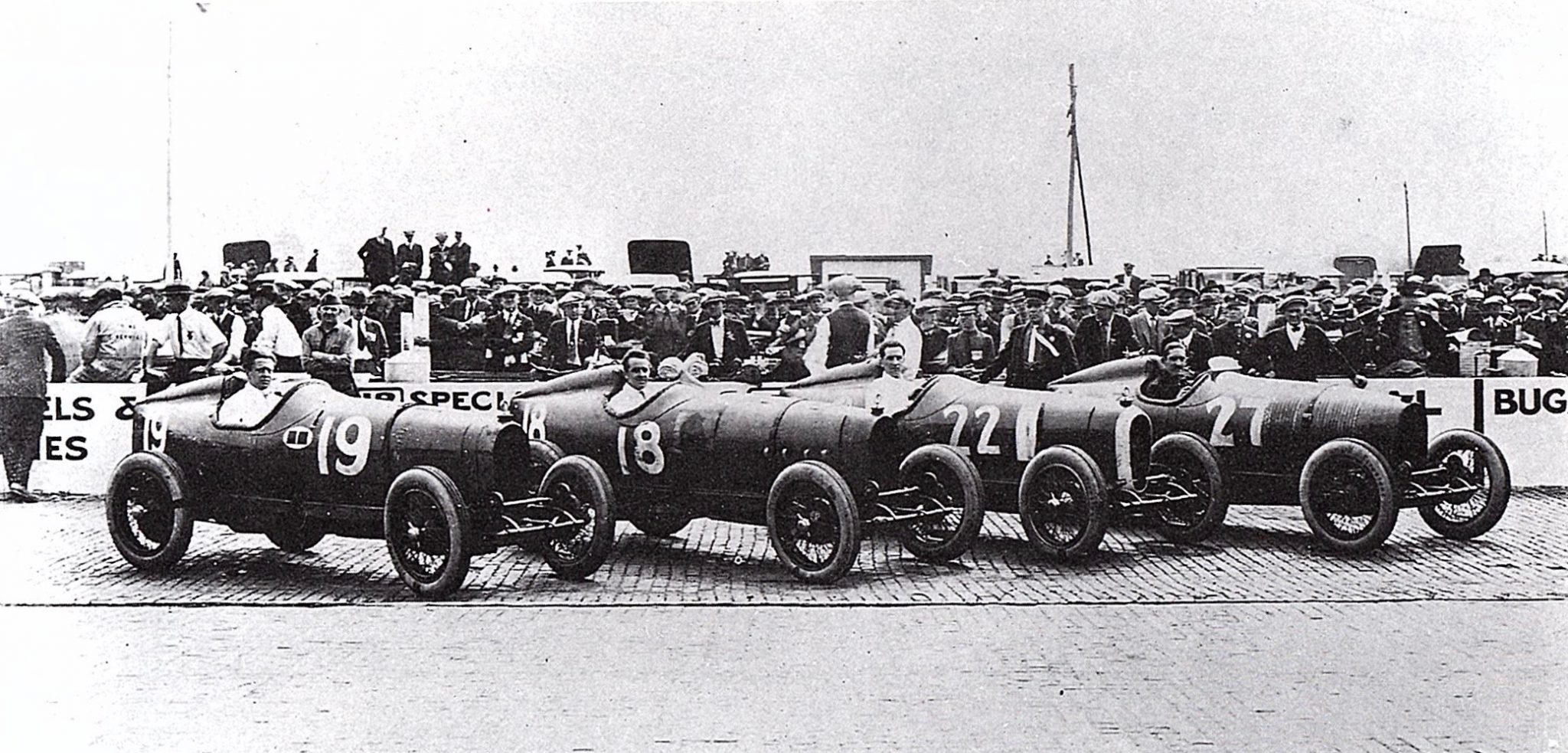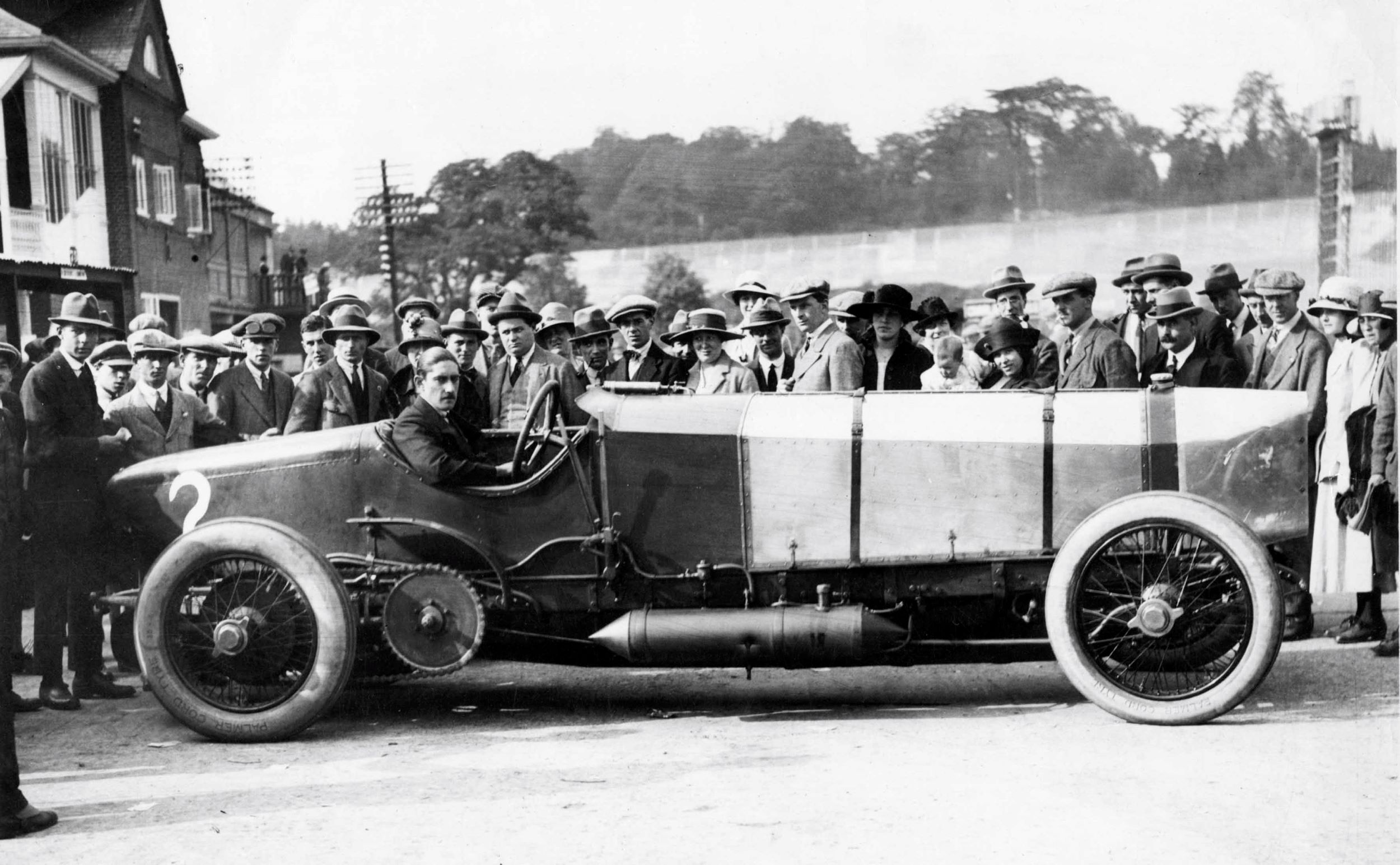
Chitty Bang Bang
How many Chittys were built. Count Louis Zborowski designed and built four racing cars in the stables at Higham Park from 1921-1924, The 4th was not fully developed by the time of Zborowski’s death in November 1924. Zborowski’s career as an amateur racing driver encompassed a wide experience of marques and events. In 1921 Zborowski was to drive one of the 1921 Grand Prix Sunbeams representing Britain at Le Mans but this did not transpire and instead he raced the car at the International Shelsley Walsh – England’s foremost Speed Hill-Climb. He was an early patron of Aston Martin, and raced for them at Brooklands in the French Grand Prix. In the 1923 raced at the 11th International 500-Mile Sweepstakes Race was held at the Indianapolis Motor Speedway. Zborowski drove a Bugatti and finish #24. He drove in the Italian Grand Prix at Monza in a single-seat “American Miller 122”. Zborowski joined the Mercedes team in 1924 but died in one of their cars, after hitting a tree during the Italian Grand Prix at Monza. He was just 29 years old.
Count Zborowski’s exploits inspired Ian Fleming’s Chitty Chitty Bang Bang story. There were six original Chitty Chitty Bang Bang’s built for the 1968 film – two were racers and four were touring cars. One was fitted with a hovercraft skirt to skim over the water, while another was able to spread its wings when required. In the opening credits of the film, you can see tributes to the original Chitty Bang Bang racing history.

Chitty Bang Bang 1
Zborowski designed and built four of his own racing cars in the stables at Higham Park from 1921-1924, assisted by his engineer and co-driver Captain Clive Gallop, who was later racing engineer to the “Bentley Boys”. Chitty 1 was powered by a 23,093 cc six-cylinder Maybach aero engine and called “Chitty Bang Bang”. It achieve celebrity status at the Brooklands race track in 1921 by winning two races in her debut appearance, reaching speeds of 100.75 miles an hour in the Brooklands Short Handicap.
In order to get significant ground clearance the original maybach oil-sump had to be removed, so a system of dry-sump lubrication was contrived, with a big oil reservoir slung alongside the chassis frame on the off-side. In the fashion of those times this was giving a pointed prow for good air penetration, in spite of the enormous drag of the big radiator and primitive bodywork.
Chitty was in the nature of an experiment and it was at first giving a crude four-seater body, which was knocked up by Blythe Bros. of Canterbury, a very long established coach building firm in which the Count had a financial interest and whose trade plates he apparently used when taking his car out on test. Chitty was an immediate success and was great fun on the road, providing it s negligible breaking power was kept in mind, and it was not called upon to negotiate twisting sections of the local terrain.
At Brooklands, The great car was a sensation. Zborowski used to turn up in the company with his friend major Jack Cooper, Miles and mechanic Wigginsworth, all of them wearing loud check caps imported from Palm Beach. To see them starting Chitty with the aid of a half-axle from a B.E. Aeroplane, the half compression device and someone furiously winding the dashboard starting-magneto was a site no Brooklsnd’s habitue cared to miss.
The press helped the drama along by describing Chitty as of 600 horsepower and billing it as a rival to the big Sunbeam, which they endowed with at least 450 horsepower. For all his flamboyance, Zborowski was cautious. He knew that much would be expected of his 23-litre home-built car and that it if it failed as a race car he could become a laughing stock. He did not expect the handicappers to treat him kindly. So the ugly body set off by crude exhaust pipe with a right angle bend in it was a foil to any ambitions he had for the car.
Paint gray, Chitty was entered for the Easter 1921 brooklands meeting. Although the chassis had been strengthened by bracing rods and flitch plates, handling was none too good and it was found advisable to carry 7 cwt. of sand in the back of the body to keep the back wheels in contact with the cement.
Chitty went out for the first race on that Easter Monday at Brooklands on 28th March 1921, giving Birkin’s D.F.P. 78 seconds start and itself leaving the line 4 seconds ahead of Andre Boillot in the 4.9 litre six-cylinder Sunbeam. Zborowski was faster on starting-start lap than the Frenchman, and although the Sunbeam made up a little on the flying lap it could not catch the aero-engine car which lapped at 108.15 mph. and won its first race, this 23rd 100 mph Short Handicap, at 100 mph. The bookies took 6 to 4 on Zborowski, 4 to 1 the field.
In gallery: How Chitty 1 finished up after the accident in practice at Brooklands in 1922. It burst a tire, hit the parapet of the track, slid down the home banking, demolished a wooden hut, cutting off the fingers of an official as it did so, tore off its front axle, discarded its mechanic and ended up as shown, the off-side tire having left the rim. Zborowski still in the driving seat was uninjured and Chitty 1 was rebuilt.





You must be logged in to post a comment.